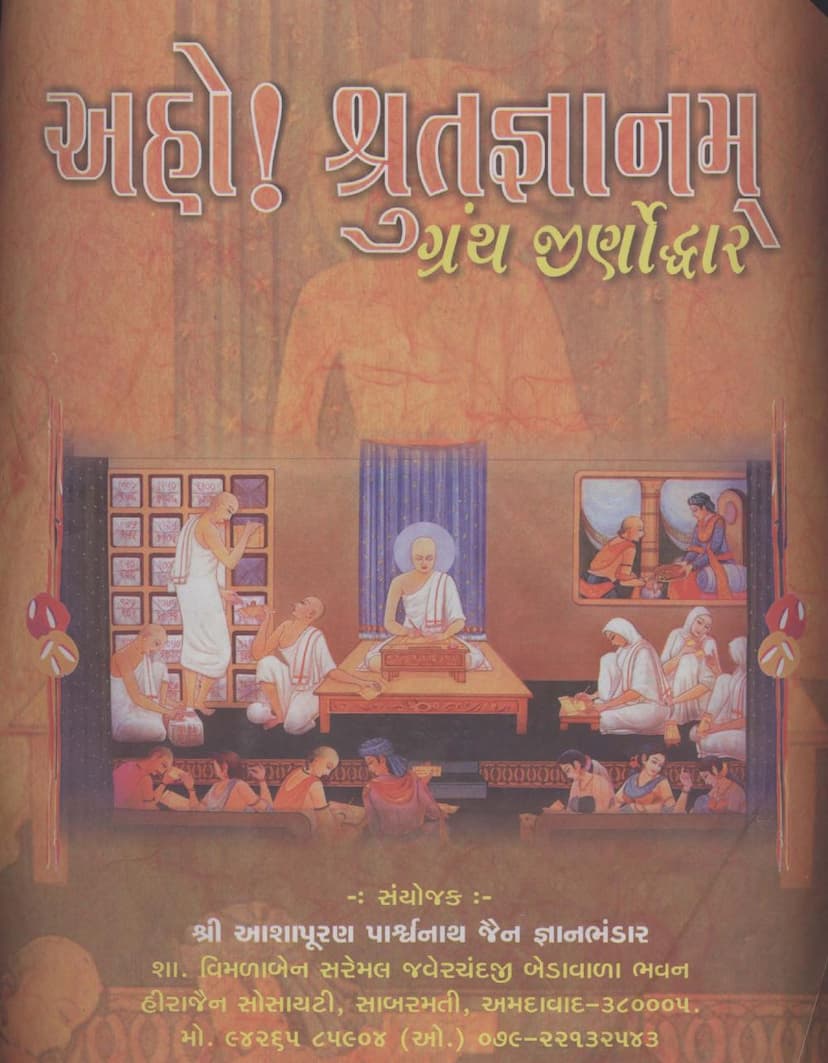Operation In Search Of Sanskrit Manuscripts In Mumbai Circle 4
Added to library: September 2, 2025

Summary
This Jain text, titled "Operation In Search of Sanskrit Manuscripts in Mumbai Circle 4" by P. Peterson, published by the Royal Asiatic Society, is a catalog or report related to the search and preservation of Sanskrit manuscripts. The provided text consists of several pages, primarily featuring lists of ancient Jain texts.
Here's a summary based on the provided pages:
-
Title and Authorship: The book is a report detailing operations in the search for Sanskrit manuscripts within the Bombay Circle, covering the period from April 1886 to March 1892, authored by Professor Peter Peterson.
-
Purpose of Preservation: The text highlights efforts to restore and preserve ancient Jain scriptures. Specifically, pages mention "ગ્રંથ જીર્ણોદ્ધાર" (Granth Jīrṇoddhār), which translates to "restoration/preservation of texts." The work is presented as a collection of information about various authors and manuscripts, intended to be a valuable resource.
-
Content: The core of the document is a comprehensive list of Jain manuscripts. These lists are organized by:
- Set Number: The texts are categorized into sets (Set No. 1, Set No. 2, Set No. 3, etc.), likely indicating different phases or categories of the project.
- Serial Number: Each manuscript is assigned a serial number (e.g., 001, 002, 055, 076, 101).
- Book Title: The title of each manuscript is provided in Sanskrit or related languages (e.g., "Shri Nandi Sutra Avachuri," "Shri Uttaradhyayan Sutra Churni," "Shilpa Ratnam," "Nyayapravesah," "Saptabhangi Mimansa," "Samayan Tarka Prakaran").
- Author/Commentator: The name of the author or commentator is listed (e.g., "Pu. Vikram Suriji," "Pu. Jinasuri," "Shri B. Bhattacharya," "Pt. Bhagwandas Jain," "Shri Durlabhji Mehta").
- Language: The language of the manuscript is sometimes indicated (e.g., Sanskrit, Gujarati, Hindi).
- Page Count: The number of pages in each manuscript is provided.
- Sponsor/Editor: The names of individuals or organizations involved in the restoration or publication are mentioned, such as "Shri Ashapurna Parshvanath Jain Gyan Bhandar" and "Shah Babulal Sarumal Bedawala."
-
Scope of the Collection: The lists cover a wide range of Jain philosophical, scientific, architectural, and literary works. Subjects include:
- Logic and Philosophy: Texts related to Jain logic (e.g., Nyaya, Syadvada).
- Architecture and Arts: Manuscripts on architecture, sculpture, and iconography (e.g., Shilpa Ratnam, Vastuvidya, Prasad Tilak, Kasyapashilpam, Rajavallabha).
- Scriptural Commentaries: Commentaries on foundational Jain texts (e.g., Nandi Sutra, Uttaradhyayan Sutra).
- Astrology and Astronomy: Texts related to these fields (e.g., Jain Jyotish, Jotiirmaloday).
- Poetry and Literature: Various literary works.
- Ayurveda: Texts related to medicine.
- Grammar: Works on Sanskrit and Prakrit grammar.
-
Emphasis on Rarity: The text mentions that many of these books are "praya apraapya" (प्रायः अप्राप्य), meaning "almost unobtainable" or "rare," highlighting the significance of the preservation effort.
-
Digital Preservation: The mention of "scan DVD banayi" (scan DVD banai) suggests that efforts were made to create digital copies of these valuable manuscripts.
-
Underlying Motivation: The introductory remarks suggest a deep reverence for "Shrutagyan" (શ્રુતજ્ઞાન - knowledge gained through scriptures) and a concern for its preservation for future generations, inspired by the efforts of saints and scholars. There's an underlying sentiment of urgency due to the potential loss of these texts over time.
In essence, Professor Peterson's report is a detailed inventory and acknowledgment of significant Jain manuscripts, emphasizing the critical work of their preservation and making them accessible to scholars, likely through scanning and printing projects. The catalog provides a valuable glimpse into the rich literary heritage of Jainism, particularly focusing on texts found in the Bombay region.